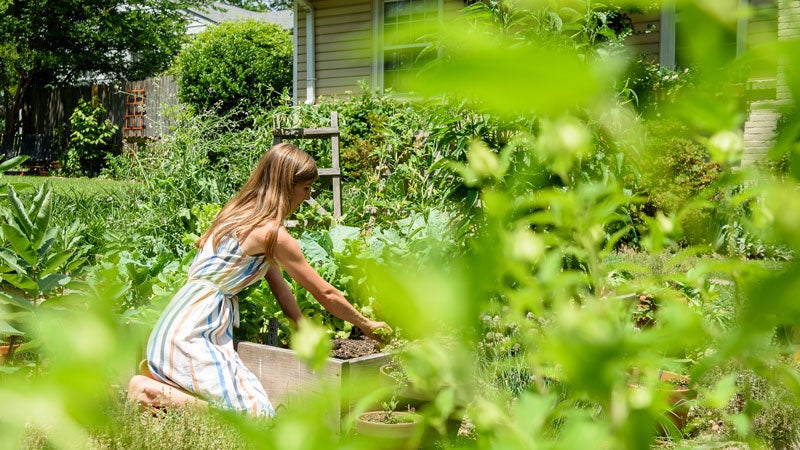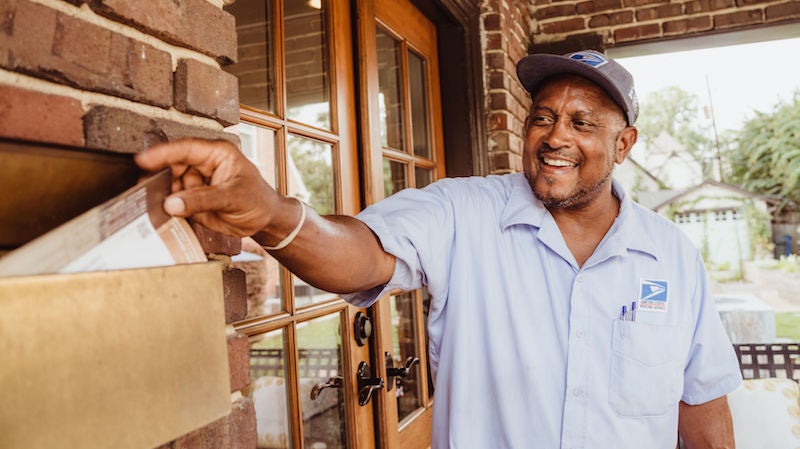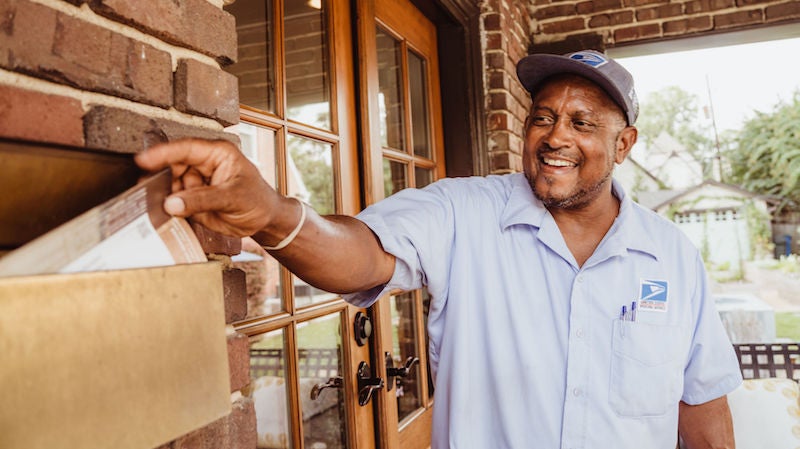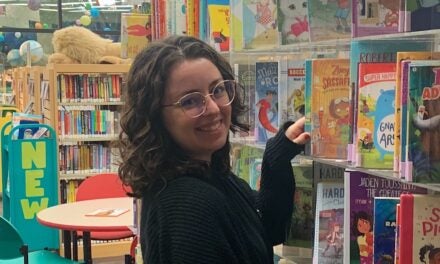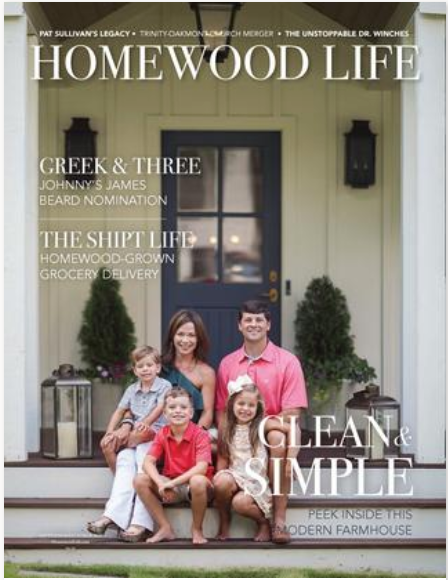Inside Mary Liz Ingram’s house, shampoo bars and soap bars rather than plastic bottles line the ledge of the shower. Bamboo sticks with colorful bristles fill the toothbrush holder on the bathroom sink. Glass bottles with hand-written labels sit in the bathroom and kitchen cabinets ready for cleaning bodies and the house.
Just a few months ago, those items weren’t there though, back before Mary Liz started to take any measure she could to stop using single-use plastic products. The time between now and then is all documented on the West Homewood resident’s Facebook page. There you’ll find posts with homemade hamburger buns, homemade cookies, homemade tortillas, homemade banana-oatmeal breakfast cookies and homemade pizza dough made with a bread machine. And then there’s the homemade dishwasher tabs, the homemade sunburn relief lotion and the homemade dry shampoo—all with plastic-free packaging of course.
There’s no doubt Mary Liz is a crusader, but she’s a humble one, taking on practices in extremes in hopes of inspiring those around her to start simply. “If people forget their (cloth grocery) bags a 100 times, I don’t want people to feel bad,” she says. “It took me a long time.” The first step, she says, is to pay attention to where you see plastic. And then she suggests exploring alternatives and giving them a try.
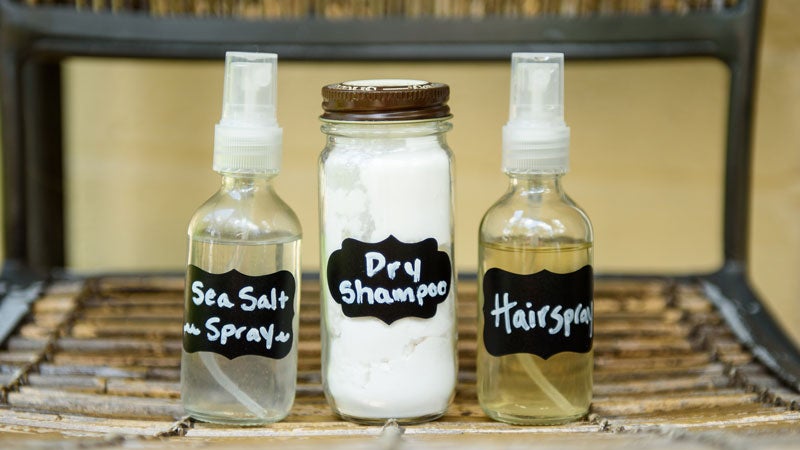 After all, that’s how her family’s journey began earlier this year—with her daughter Mary Clare and her friend Maggie Player’s science fair project at Homewood Middle School on single-use plastic and how biodegradable spoons can be used as a plastic alternative. From there her other two kids, Patrick and Nora, wanted to have a “home science fair,” and Mary Liz jumped on board too with a plastic-free mission. With the season of Lent leading up to Easter, where Christians traditionally take on forms of fasting, coming up, she decided to give up single-use plastic for 40 days.
After all, that’s how her family’s journey began earlier this year—with her daughter Mary Clare and her friend Maggie Player’s science fair project at Homewood Middle School on single-use plastic and how biodegradable spoons can be used as a plastic alternative. From there her other two kids, Patrick and Nora, wanted to have a “home science fair,” and Mary Liz jumped on board too with a plastic-free mission. With the season of Lent leading up to Easter, where Christians traditionally take on forms of fasting, coming up, she decided to give up single-use plastic for 40 days.
Lent for Mary Liz began with research. She counted the single-use plastics in their home, stopping at 620 items, before even getting to utensils or medicine bottles. And she looked outside her home too, learning that 40 percent of produced plastic is single-use, and out of 6.9 million tons of waste, 6.4 billion tons is never recycled. “It hit me like a smack in the face that something has to change,” she writes on her blog. “Our habits must change. Our disposable culture must change, or we (and the rest of the planet) will be buried in trash.”
Today, even with Lent season long past, the new habits have stuck, and Mary Liz’s family is spending less money on groceries (even with trips to Whole Foods) and is eating fewer prepacked food products. They are down to only one bag of trash a week, even as a family of five, and since many of the products they use are more concentrated, they don’t run out of them as fast either. “I feel calmer and like our life has not be disrupted,” she says.
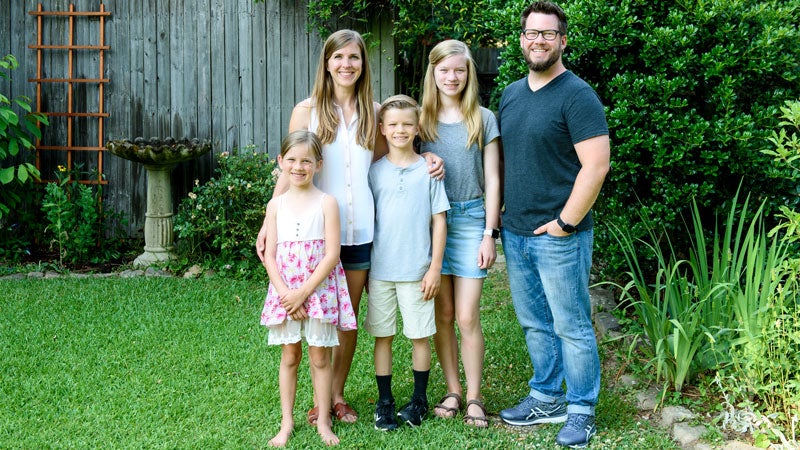 In many ways sustainable living practices are nothing new for Mary Liz. Back in elementary school she founded a Clean Up Club to pick up litter, and you’ll often find her kids picking up trash on their walk home from Hall-Kent Elementary.
In many ways sustainable living practices are nothing new for Mary Liz. Back in elementary school she founded a Clean Up Club to pick up litter, and you’ll often find her kids picking up trash on their walk home from Hall-Kent Elementary.
Five years ago she started a garden that’s now taken over her front yard as a source of fresh produce and a way to live more sustainably, and she’s always sharing it with neighbors and holding plant giveaways too. Nestled around her Little Free Library (it’s no surprise she has one of those too), tomatoes sprout up alongside blueberries and strawberries, and nearby carrots, potatoes, sweet potatoes, beets and radishes are hidden under the dirt. And then there’s a long list of all things green that they harvest too: herbs, peas, kale, collards, lettuce, Swiss chard, zucchini and cucumbers.
Just like she shares her plants, Mary Liz is now sharing the shampoo bars she makes and ideas for trying new plastic-free habits. She will tell you she tries not to be pushy, and if you know her you know she’s a far cry from it. But what she’s passionate about is catching on with those around her. When the preschool she serves as director of held its Muffins for Mom event in May, her coworkers chose to put up the plastic, pulling out stainless steel utensils, cloth tablecloths and aluminum trays for leftover muffins instead of Ziploc bags.
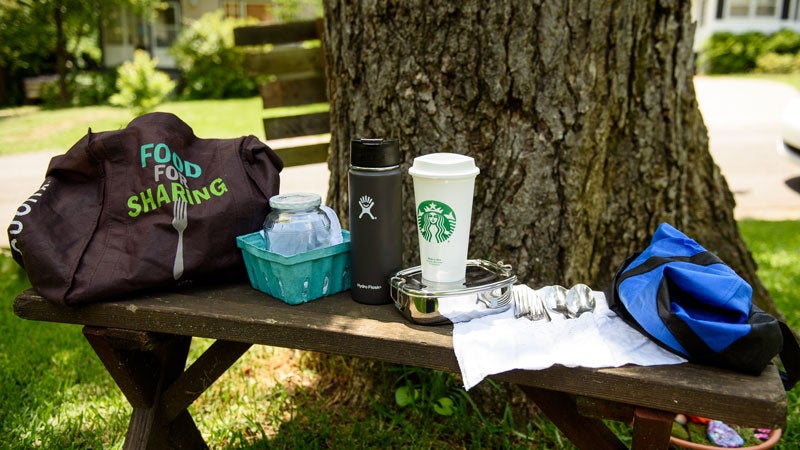 That sounds weird, you might be thinking, and Mary Liz would agree, especially for an introvert like her. But for her it’s worth it, and she’s committed, so committed she bought a tote bag at Hobby Lobby recently when she ended up with more items in her cart than she thought she’d get and had no reusable bag in hand. At the Lebanese Food Festival this spring, she pulled out a stainless steel silverware pack she keeps in her car and brought their Styrofoam food trays home to recycle later.
That sounds weird, you might be thinking, and Mary Liz would agree, especially for an introvert like her. But for her it’s worth it, and she’s committed, so committed she bought a tote bag at Hobby Lobby recently when she ended up with more items in her cart than she thought she’d get and had no reusable bag in hand. At the Lebanese Food Festival this spring, she pulled out a stainless steel silverware pack she keeps in her car and brought their Styrofoam food trays home to recycle later.
Now when she plans parties for neighborhood kids, Mary Liz sets out her 36 sets of stainless steel forks and spoons, tablecloths she made out of old sheets and a collection of washable plastic cups and plastic plates for them. “The kids are used to it now, so they don’t throw them away,” she says. And it’s all cheaper to wash than to keep buying too.
Be it mixing up homemade glass cleaner or skipping the plastic forks, little things have a not-so-little impact in Mary Liz’s eyes. But they do require something: “You have to be willing to stand out just a little in the things that feel like a big deal but they are really not,” she says.
Learn more about Mary Liz’s journey and find more of her tips at cleanupprojectusa.com or on Facebook at @TheCleanUpProjectUSA.
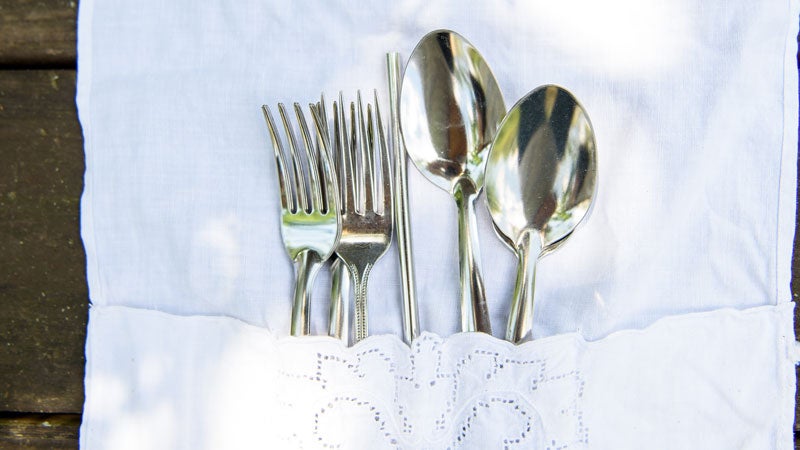 Small Steps to Reduce Plastic
Small Steps to Reduce Plastic
From Mary Liz Ingram
- At the grocery store, look for produce that’s not in a plastic bag, glass instead of plastic containers for products in aisles, and eggs in a cardboard carton instead of foam or plastic.
- Buy reusable shopping bags and keep them in your front seat to help you remember to take them inside stores with you. You can place some reusable produce bags (available on Amazon) in them too.
- If you want to go big, bring containers to the grocery store for filling with bulk items. They will weigh and mark them at stores like Whole Foods, and you can fill them with oats, rice, beans, nuts, you name it.
- Keep a set or two of silverware and a reusable coffee cup with you in your bag or car, and bring them into coffee shops, restaurants, food festivals or wherever you might find plastic serving ware.
- Make substitutions, like reusable sandwich bags (available at Target) instead of the typical Ziploc ones.
Alternate Ways to Recycle
There’s a mini recycling center in Mary Liz’s trunk full of collected items that are easy to recycle, just not in a Homewood curbside bin. Here’s what she had to say where to take them.
- Take glass to Target. I stop by on the way to work. The bins at our store are right by the restrooms.
- Take plastic bags and foam cartons and trays to Publix. I collect any plastic grocery sacks, bread bags, deflated air-filled plastic packaging (not bubble wrap), wrappers around paper towels, toilet paper and more and stuff them right in the bin on my way in to shop. We wash out any Styrofoam containers and do the same!
- Follow directions from how2recycle.info for products with a “How2Recyle” label. The website will tell you where to recycle and how to break down multi-material packaging for recycling. For instance, I could take an Amazon bag to Publix or Target and recycle it with my other plastic bags.
Shower Switches
When Mary Liz inventoried single-use plastic in her house, she started with changes in the bathroom after finding so much plastic in such a small space. Here are some products to purchase and make that she recommends. Purchased products are sometimes more expensive, but the homemade ones are super cheap and super easy according to Mary Liz.
Shampoo bars and conditioner bars:
- Whiff brand, available on Amazon
- Savannah-based Nourish. Mary Liz likes the rose and beet conditioning bar, and they have several more choices for all types of hair. You can find their products at nourishsavannah.com.
- R. Liggetts shampoo bar, available at Whole Foods and other retailers
- Make your own.
Other products:
- Bite brand toothpaste, which comes in a jar
- Coconut oil to moisturize or a plastic-free lotion bar
- Meow Meow Tweet deodorant (packaged in a cardboard tube), available on Amazon
- DIY deodorant with a quick recipe of 2 Tbsp. coconut oil, 1 Tbsp. baking soda, 1 Tbsp. cornstarch and 10 drops of essential oil (she uses lavender)
- Homemade lip balm made by melting beeswax and coconut oil in the microwave
- Homemade face powder made with cocoa powder and either cornstarch or arrowroot starch
- Wooden eyeliner pencils instead of plastic eyeliner pencils
- Plastic-free mascara and other cosmetics she found by searching “Clean Faced Cosmetics” on Amazon

